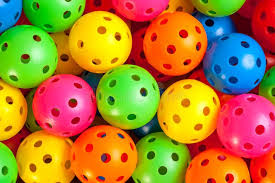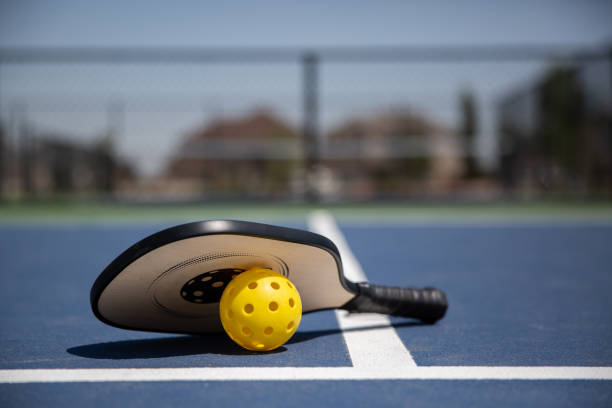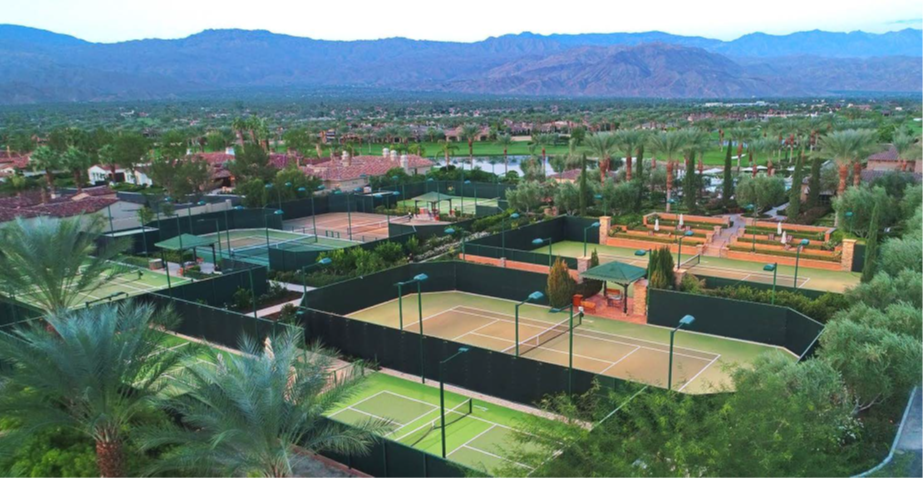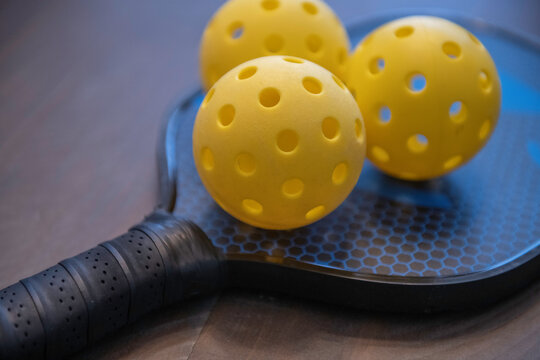Pickle Ball... Whats the racket all about?

Pickleball court noise reduction... the popularity of this fast emerging sport brings an increased demand for sound solutions
Thwack! The distinctive sound of a pickleball paddle meeting its target echoes through the neighborhood. For many, it’s the soundtrack of a fun-filled day at the courts. But for others, it’s become an unwelcome disturbance.
As pickleball’s popularity soars, so do noise complaints from nearby residents. The sport’s unique sound profile has sparked heated debates and even legal battles in some communities. But what if there was a way to enjoy this beloved game without causing a racket?
In this blog post, we’ll serve up some game-changing strategies to reduce pickleball court noise. From innovative soundproofing materials to clever court designs and equipment tweaks, we’ll explore how players, facility managers, and communities can work together to keep the peace while keeping the game alive. Get ready to discover how you can be part of the solution and ensure pickleball remains a welcome addition to your neighborhood!

Understanding Pickleball Court Noise ...
Common sources of noise
Pickleball court noise primarily originates from three main sources:
- Ball-paddle impact
- Player movements
- Spectator reactions
The distinctive “pop” sound of the ball hitting the paddle is the most significant contributor to noise pollution. Player movements, such as quick footwork and sudden stops, also generate considerable noise. Lastly, spectator reactions, including cheering and clapping, add to the overall sound levels.
Noise Source | Decibel Range | Frequency |
Ball-paddle impact | 60-70 dB | High |
Player movements | 50-60 dB | Medium |
Spectator reactions | 70-80 dB | Variable |
Impact on players and neighbors
The noise generated during pickleball games can have significant effects on both players and nearby residents:
- Players: Extended exposure to high-decibel sounds may lead to:
- Hearing fatigue
- Reduced concentration
- Increased stress levels
- Neighbors: Continuous noise from nearby courts can result in:
- Sleep disturbances
- Decreased property values
- Quality of life issues
Legal considerations and regulations
As pickleball’s popularity grows, many communities are implementing noise-related regulations:
- Noise ordinances: Local governments may set specific decibel limits for recreational activities.
- Time restrictions: Courts may have operating hours to minimize disturbances during early morning or late evening.
- Zoning laws: Some areas require minimum distances between pickleball courts and residential properties.
Court owners and players must be aware of these regulations to ensure compliance and maintain positive community relations. Failure to adhere to noise regulations can result in fines, court closures, or legal disputes with neighboring residents.

So... lets talk a bit about which Soundproofing or Sound Absorbing Materials might be helpful for Pickleball Courts
Acoustic panels and barriers
Acoustic panels and barriers are essential components in reducing pickleball court noise. These specialized materials are designed to absorb and deflect sound waves, significantly diminishing the impact of noise on surrounding areas.
Material | Noise Reduction Coefficient (NRC) | Durability | Cost |
Polyester Fiber (PET) | 0.85 – 0.95 | High | Moderate |
Mineral Wool | 0.90 – 1.00 | Medium | Low |
Foam | 0.80 – 0.90 | Low | Low |
For optimal results, consider installing:
- Wall-mounted acoustic panels
- Mass loaded vinyl fencing barriers
- Freestanding sound barriers
- Overhead baffles
Noise-absorbing court surfaces
Selecting the right court surface can make a substantial difference in noise reduction. Modern materials offer excellent playing characteristics while dampening sound.
Key features of noise-absorbing surfaces:
- Shock-absorbing properties
- Textured finish for sound diffusion
- Durable and weather-resistant
Fencing and enclosure options
Properly designed fencing and enclosures can significantly contain and redirect noise. Consider the following options:
- Mass loaded vinyl barriers applied to traditional chain link or other fencing
- Fencing with a sound-absorbing core
- Acoustic slats for chain-link fences
- Polycarbonate panels for transparent noise barriers
Vegetation as natural sound barriers
Incorporating vegetation around pickleball courts serves a dual purpose: noise reduction and aesthetic enhancement. Effective plant choices include:
- Dense evergreen shrubs
- Tall grasses
- Climbing vines on trellises
By combining these soundproofing materials strategically, pickleball courts can achieve substantial noise reduction, creating a more harmonious environment for players and nearby residents alike. Next, we’ll explore court design strategies that further enhance noise control efforts.
What about Court Design Strategies for Noise Reduction?
Optimal court placement and orientation
When designing pickleball courts with noise reduction in mind, strategic placement and orientation are crucial. Courts should be positioned away from residential areas and oriented to minimize sound travel. Consider the following factors:
- Wind direction: Place courts perpendicular to prevailing winds to reduce noise carry
- Natural barriers: Utilize existing terrain or vegetation as sound buffers
- Distance from sensitive areas: Maximize space between courts and nearby homes or businesses
Orientation | Noise Reduction Impact |
Parallel to wind | Low effectiveness |
Perpendicular to wind | High effectiveness |
Diagonal to wind | Moderate effectiveness |
Buffer zones and setbacks
Implementing buffer zones and setbacks is an effective strategy for noise reduction. These areas act as sound absorption zones and create distance between the courts and surrounding areas. Key considerations include:
- Vegetation barriers: Plant dense trees and shrubs around court perimeters
- Artificial sound barriers: Install fencing or walls with sound-absorbing materials
- Green spaces: Create landscaped areas between courts and neighboring properties
Enclosed or semi-enclosed court structures
Enclosing pickleball courts can significantly reduce noise pollution. Options range from partial enclosures to fully enclosed structures:
- Partial enclosures: Install sound-absorbing panels on one or more sides of the court
- Covered courts: Add a roof structure with sound-dampening materials
- Fully enclosed courts: Create indoor facilities with comprehensive soundproofing

Conclusion ...
There are a good many applications that would improve the amount of noise that is generated in a Pickle ball court, and it is important to note that acoustic noise is due to a combination of contributing factors. By modifying or addressing any or most of these variables, improvement is definitely possible.
The most effective and approachable solutions for most courts and communities for this rapidly growing sport and enjoyable activity for many, may be found in modifying the noise levels and bringing it down to manageable levels. By integrating a few key elements it is possible to interrupt the sound movement and transmission, and absorb erratic sound from bouncing into the lives of those off the court, rather than trying to eliminate it entirely.
For exterior treatments would want to mention also that there may be value in looking at acoustic “covered” absorbers, because although enclosed courts are certainly “better” for the surrounding community they may elevate the noise for the players. Unless the interior of a covered facility is properly treated acoustically to reduce noise transfer, reflection, volume build-up, within the facility itself.
For indoor courts there are many options from overhead baffles and wall curtains, to fabric wrapped, PET or perforated wood acoustic panels. The same treatments that work for other indoor sport related facilities will add some acoustic improvements.
For open air courts, acoustic fencing options, have proven to significantly diffuse both the amount of community objection as well as the volume and range of the pickling zings, reducing noise levels from highly annoying to barely noticeable.
One Pickleball association integrated AcoustiFence by Acoustiblok. To take an excerpt from their case study (IMAGE ABOVE):
“This cutting-edge 1/8-inch thin sound barrier is engineered to reduce the types of noise generated on and pickleball courts. Acoustifence (STC30) was selected because of a unique characteristic that sets it apart from other sound barriers when dealing with a range of acoustic frequencies from numerous sources; the heavy limp Acoustifence material actually vibrates from sound waves. In essence, it is transforming these sound waves into mechanical movement creating inaudible internal friction energy. According to customer, the installation of the Acoustifence curtains (fence heights varied between 6.5 ft –9.5 ft) went up easily onto the existing chain-link fence and the two tennis court gates. They also stated they were amazed with the substantial noise reduction and haven’t received any noise complaints. Remarkably, in a sound meter test conducted by USA Pickleball Association, Acoustifence installed around a pickleball court reduced the noise by 10-12 decibels. This represents over a 50%-reduction in sound experienced by nearby homeowners.”
Wallworks Acoustic Architectural Products Inc. continues to develop product solutions for emerging new applications and has over 40 years experience with all sorts of sound solutions, from large to small. We are proud distributors of Acoustifence and Acoustiblok and many and varied other acoustic solutions that are specifically useful for this type of remediation.
Our team of specialists can assist you by customizing our materials to fit your needs. Contact us today if you are in a Pickle with noise control… we can assist you in finding the right materials to get everyone back to a happier place, without taking the fun out of this rising sport.

